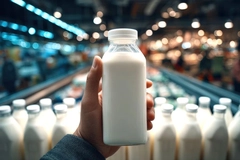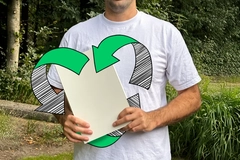Europe responsible for one third of Arctic plastic waste, find researchers

10 Feb 2023 --- The Alfred Wegener Institute (AWI) has reported that one-third of the plastic debris found in the Arctic bore imprints or labels from Europe, with a large amount coming from Germany.
The data was collected through “citizen science,” allowing interested citizens to engage in scientific research actively. The participants went on sailing cruises offered by companies to the Arctic, particularly Russia and Norway, surveying and collecting plastic debris that washed up on the shores of Svalbard, Norway.
“I know this is not good news for the packaging industry, but we have to produce less new plastic,” AWI researcher Dr. Melanie Bergmann tells PackagingInsights.
She continues by saying that a standardized design of plastics is an important goal the packaging industry needs to work toward decreasing its waste in waterways and, thus, oceans. “This means that products should consist of single polymer types and non-toxic chemicals that are declared.”
 Citizens participated in research by sailing through the Arctic to collect and observe plastic waste. German contribution
Citizens participated in research by sailing through the Arctic to collect and observe plastic waste. German contribution
Most items could be classified as stemming from fisheries, but their point of origin couldn’t be identified. Approximately 1% of the debris labels were able to be recognized. Besides Europe, experts found debris from Brazil, China and the US.
The plastic debris from Germany accounted for 8% of the total identifiable waste.
“I would not have expected such a high contribution [from Germany]. On the other hand, Germany is among the top plastic producers and exporters in the EU. It is not surprising that more leaks into the environment from a country handling more plastic, even if it has good waste collection systems,” says Bergmann.
“Ten percent of the German gas demand is used for plastics and plastic accounts for 4.5% of the global CO2 emissions. So, from that perspective, we also have to cut virgin plastic production.”
Call for legislation
Bergmann states that to prevent waste from resurfacing in the Arctic and damaging ecosystems the packaging industry must reduce its plastic production. She calls for tighter legislation, endorsing the UN Plastics Treaty.
“In the industrialized countries of Europe, North America and Asia, approximately 11% of the global plastic production finds its way into our waterways. This underscores the urgent need for an ambitious and legally binding UN Plastics Treaty, which is currently being negotiated and due to enter into force in 2024.”
“Our results highlight that even prosperous industrialized countries, which can afford better waste management, make significant contributions to the pollution of remote ecosystems like the Arctic,” asserts Bergmann.  Researchers call for tighter legislation on plastic packagers to reduce plastic found in the Arctic seas.
Researchers call for tighter legislation on plastic packagers to reduce plastic found in the Arctic seas.
Environmental effects
The researchers state that a comparison of the new data with those from previous fieldwork conducted at the sea surface and the deep ocean floor shows that much more debris accumulates on Arctic shorelines, making them a final sink.
“From previous studies and computer models, we know that plastic pollution comes from local and remote sources alike,” says Anna Natalie Meyer from the AWI.
“Locally, plastic debris finds its way to the ocean from ships and Arctic communities with poor waste management systems. As for remote sources, plastic debris and microplastic are transported to the Arctic Ocean from the Atlantic, North Sea and North Pacific by various rivers and ocean currents.”
Based on the findings, the researchers believe this plastic debris poses additional challenges for Arctic ecosystems, which are already overly burdened by climate change. They express that the Arctic is warming at four times the global average rate.
“A scientific study showed that we can cut new plastic pollution by 47% if we reduce production through reuse systems (for example, deposit-refund systems), substitution and changes in the transport of goods,” adds Bergmann.
“If we produce less, less will leak into the environment. How can our waste collection systems keep up with an 8% growth in production every year (paid by taxpayers), especially in less affluent economies or very rural areas such as the Arctic (Greenland, Siberia),” Bergmann concludes.
By Sabine Waldeck











